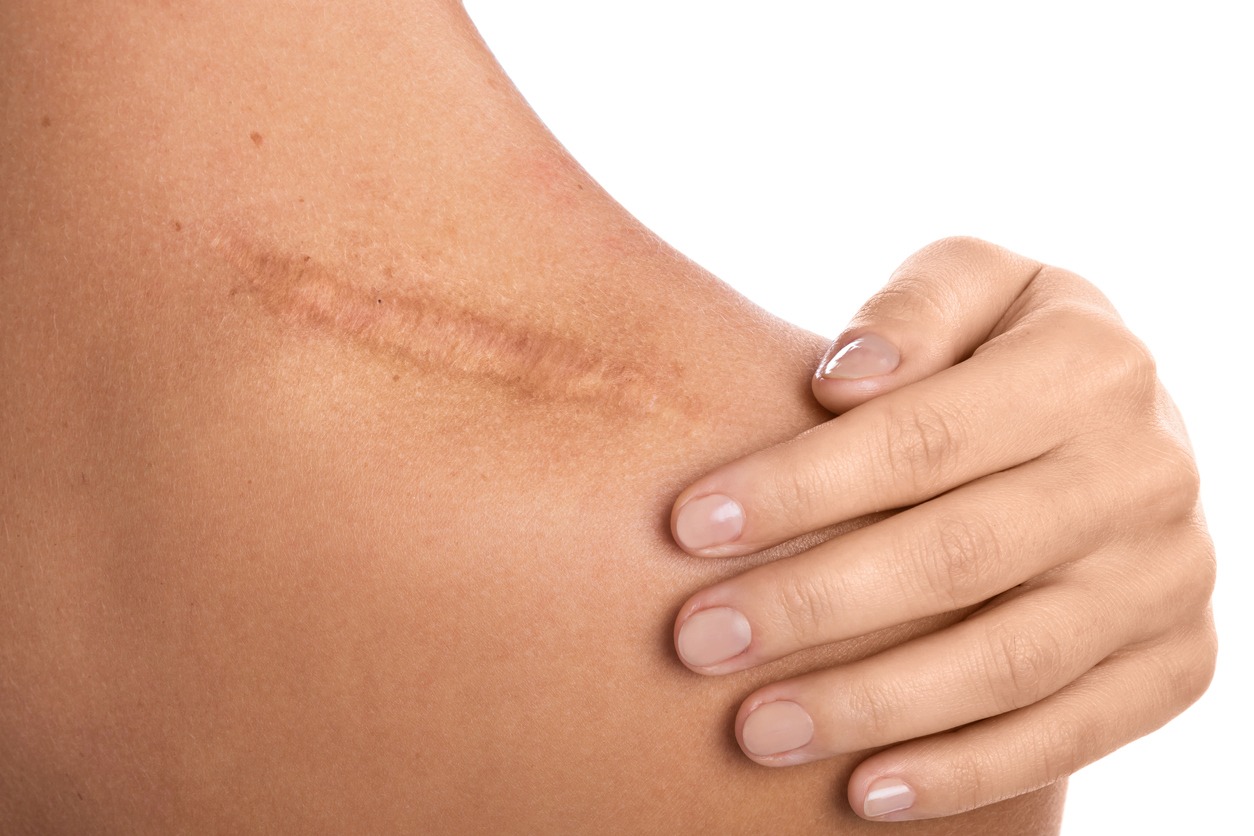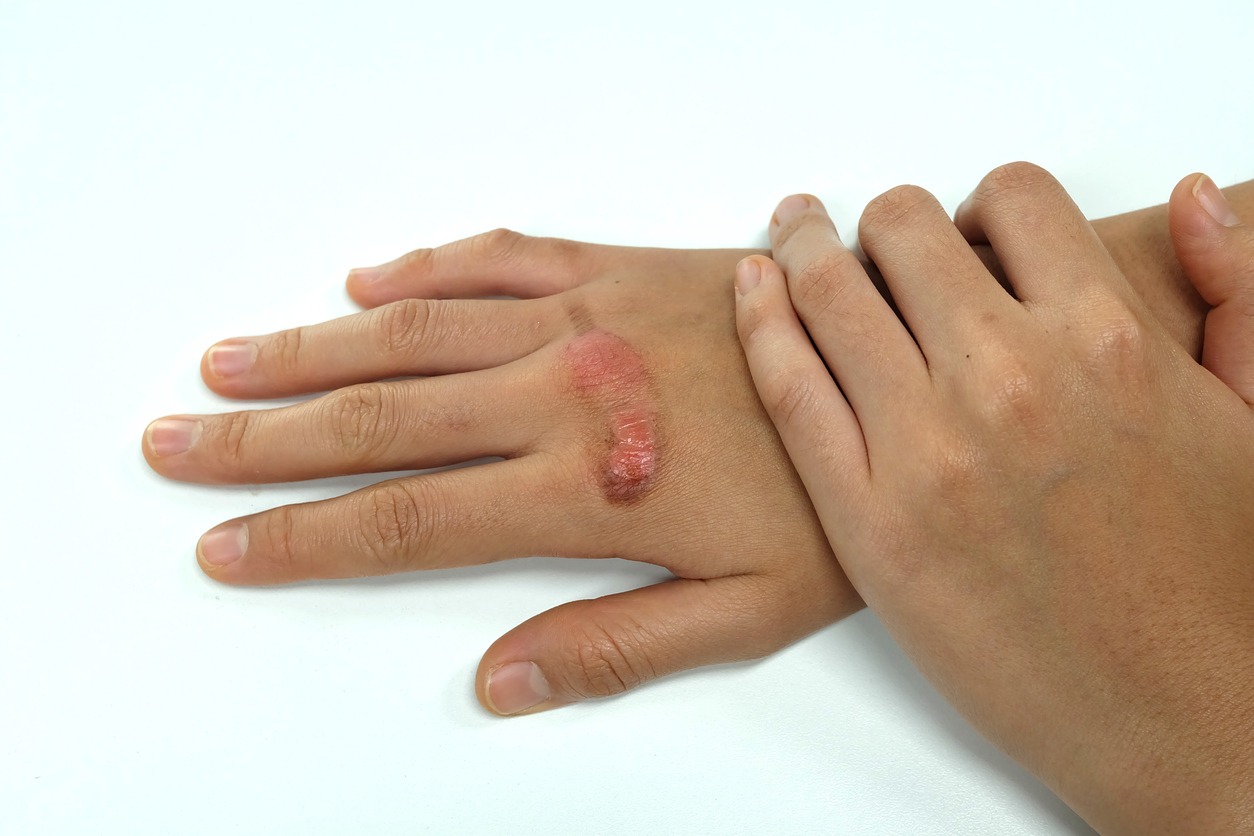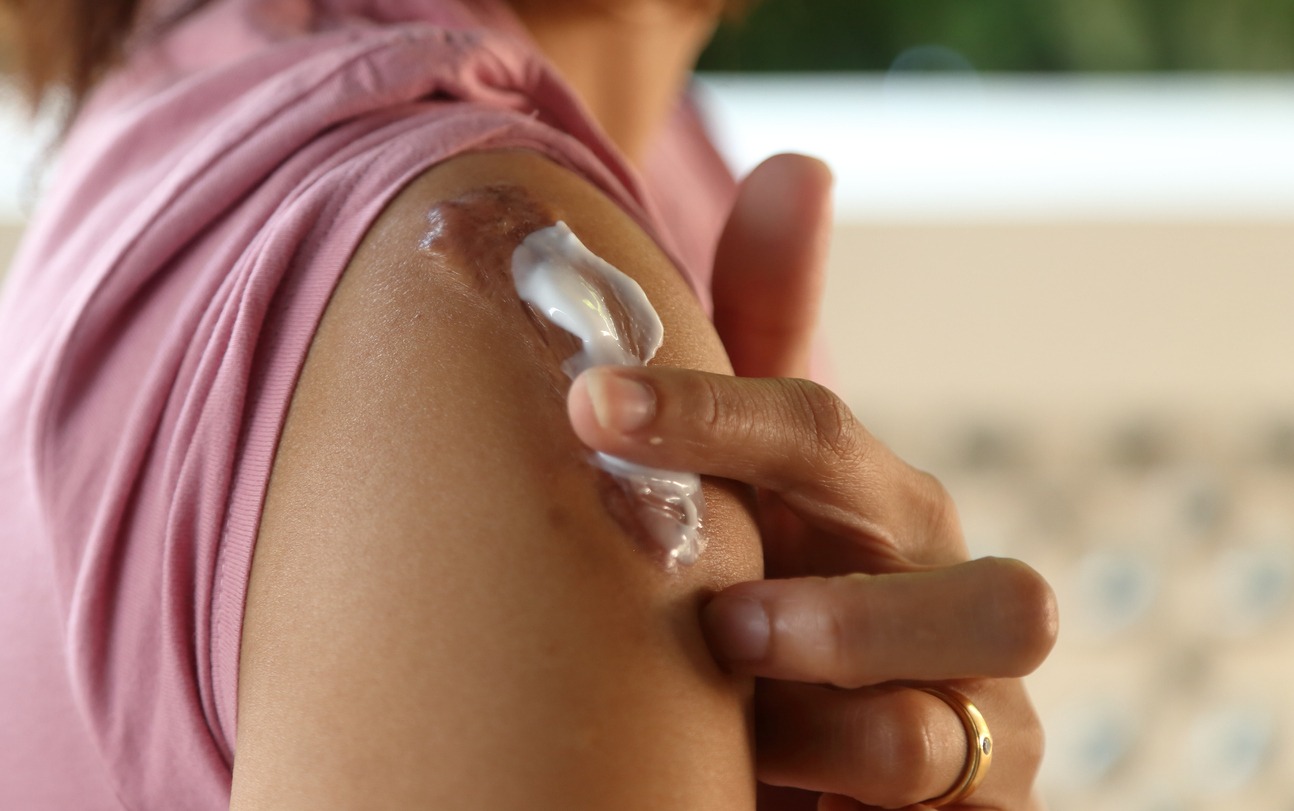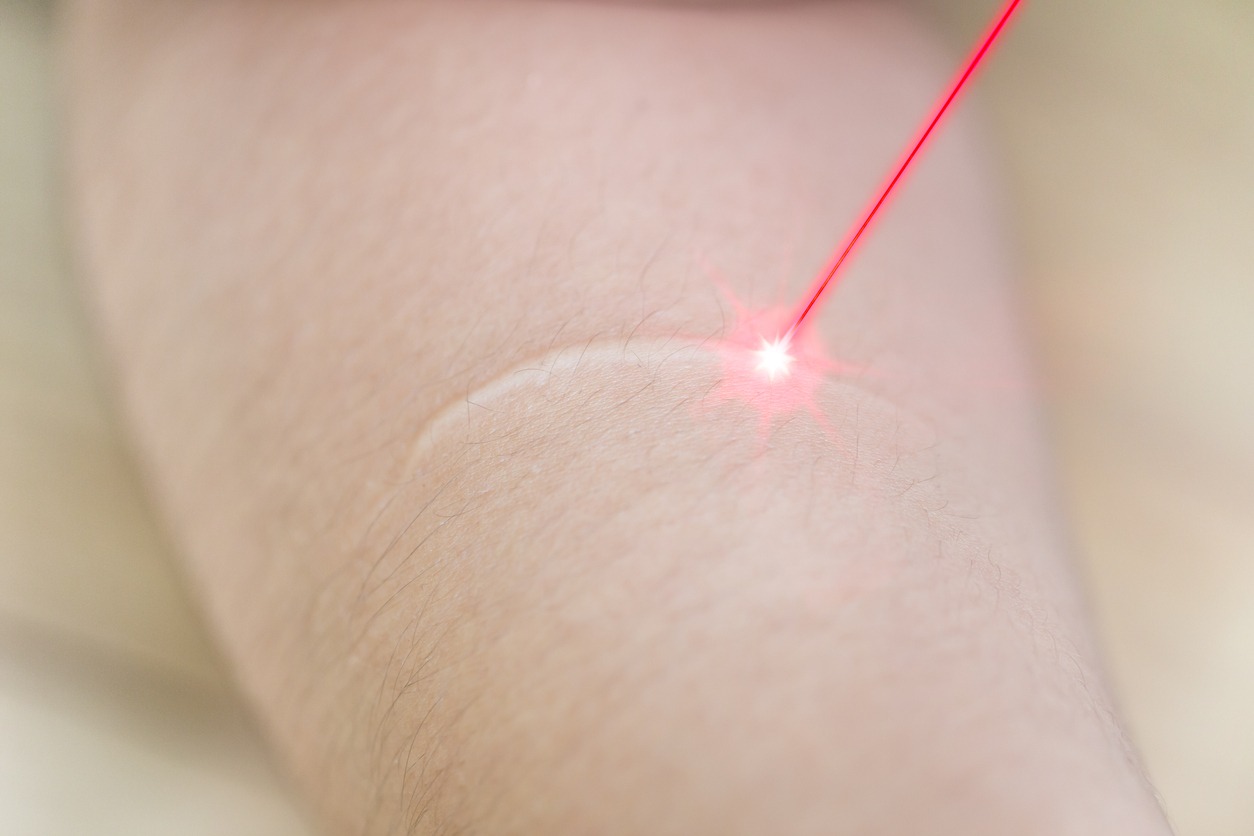Regardless of how cautious we are, accidents occur. Whether it’s a child knocking his head on the sharp corner of a coffee table or an adult slipping with a kitchen knife while chopping vegetables, injuries and frequently permanent scars are common. Though comprehensive scar prevention following a cut may be unattainable, there are ways to decrease the severity of any residual traces. Read on for tips!
What are scars?
Scars are caused by the tearing of the dermis, the lowest layer of skin, which is rich in collagen – elastic fibers that make our skin supple (among other bodily benefits). Scarring is a consequence of any injury to the dermis.
Consider our usual collagen to be as even as a basket weave. When a scar or skin injury occurs, it prompts a wound-healing response that can produce just enough collagen, not quite enough collagen, or a little bit of additional collagen. It will always be distinct from the initial skin in that location.
As we age, our bodies produce less collagen, making the elderly more susceptible to scarring than children. And whether or not a wound will scar may depend on what portion of the body was harmed and how much blood is circulating to that area.
The face and scalp tend to heal the quickest because they have the best circulation, whereas a cut on your foot, where circulation is not as good, may take weeks to heal.
Types of Scars
Scarring should be small and light, although scars can take many forms:
Atrophic scars: These indented scars, such as those caused by acne or chickenpox, occur when the skin is unable to renew sufficient collagen to restore the original tissue.
Hypertrophic scars: These scars are thick, elevated, and typically reddish and within the boundaries of the original injury.
Keloid scars: Keloid scars are thick, elevated scars that extend beyond the original damage; they are formed when the skin produces an excessive amount of collagen in an attempt to heal. Some people are genetically susceptible to keloid scars, and Black people are more prone to them than other groups.
How scars form?
To comprehend how scars form and how to prevent them, it is necessary to comprehend how the skin heals. When you sustain a cut, scrape, or burn, your body quickly initiates a sequence of self-healing processes:
The initial phase is hemostasis. The body blocks blood loss by sending platelets to the wound site, where they clump and seal it, forming a scab.
The next step is inflammation. White blood cells travel to the site to combat bacteria. You may experience redness, swelling, heat, and discomfort. This is a normal part of the healing process and will go away on its own unless an infection takes over. More inflammation throughout the healing phase may increase the likelihood of scarring.
Next will be proliferation. When the skin and blood vessels produce new cells. As proliferation proceeds, the edges of the scab will shrink toward the center, leaving behind new skin.
Eventually, maturity occurs. The wound has healed, yet a scar may remain in its stead.
How can scars be treated?
Whenever your skin is wounded, whether by accident or surgery, your body repairs the damage. A scar may appear while your skin heals, as this is a natural part of the healing process.
Here are some recommendations from dermatologists for minimizing the appearance of scars such as scraped knees or deep scratches.
Whenever your skin is harmed, whether by an accident or a surgical procedure, your body repairs the wound. A scar may appear while your skin heals, as this is a natural part of the healing process.
Often, the appearance of a scar is determined by how effectively the wound heals. Scars after surgery or over joints such as the knees and elbows are difficult to avoid, but minor cuts and scratches can be treated at home to make them less apparent.
Tips for minimizing the appearance of scars such as scraped knees or deep scratches:
- Always maintain a clean cut, scrape, or other skin damage. Wash the area with water and mild soap to prevent the spread of pathogens and remove debris.
- To help the wounded skin heal, keep the wound moist with petroleum jelly. Petroleum jelly stops the lesion from drying out and creating a scab; scabbed wounds heal more slowly. This will also prevent scars from becoming excessively huge, deep, or itchy. As long as the wound is cleaned daily, antibacterial ointments are unnecessary.
- After washing the area and applying petroleum jelly or a comparable ointment, put an adhesive bandage to the skin. For big scrapes, wounds, burns, or chronic redness, hydrogel or silicone gel sheets may be useful.
- To keep the wound clean while it heals, you must replace the bandage every day. If you have adhesive-sensitive skin, use a non-adhesive gauze pad with paper tape. To replace sheets made of silicone gel or hydrogel, follow the instructions on the packaging.
- If your injury requires sutures, follow your physician’s instructions regarding wound care and when to get the stitches removed. This may reduce the visibility of a scar.
- Apply sunscreen when the wound has healed. Sun protection may aid in reducing red or brown discoloration and accelerating the fading of the scar. Always apply and frequently reapply a broad-spectrum sunscreen with an SPF of 30 or higher.
- Allow it to recover normally. Frequent usage of hydrogen peroxide can cause persistent irritation and impede the healing process. And refrain from picking at scabs.
- Be patient. Healing can take a considerable amount of time. The initial phase of recovery lasts three months, followed by a second phase that lasts an additional three months. A year after the incident, the scar has essentially developed, although it will continue to evolve and appear differently a year later.
How to reduce scar visibility?
1. Medicinal Ointments or Gels
Helpful over-the-counter skin remedies include creams and gels. If your scar is irritating or sensitive, antihistamine cream may be able to relieve the itch while aiding in the healing process. Corticosteroid cream has been demonstrated to prevent scarring and diminish the appearance of scars over time.
2. Silicone Gel
It spreads smoothly, dries rapidly, does not irritate delicate skin, and inhibits bacterial development. Silicone gel hydrates the skin and allows it to breathe, allowing scars to heal. According to research, silicone gel diminishes a scar’s texture, color, and height. If you attempt it, wait until the gel is completely dried before putting clothing over it.
3. Zinc Supplements
Zinc is an essential element for promoting wound healing. It reduces inflammation and stimulates cell proliferation, which may aid in the healing of scars. However, do not overdo it, as this might cause negative effects such as bloating and diarrhea. Additionally, zinc pills might leave a mild metallic taste in the mouth. Inquire with your doctor about the safest dose to try.
4. Laser Treatment
Laser therapy, like chemical peels and dermabrasion, is for severe scarring. In contrast to these other treatment techniques, laser therapy is more targeted on the scar. The lasers are aimed at certain blood vessels. Typically, the operation leaves the skin puffy and red for around five days. This will likely need to be repeated multiple times. Many individuals have three to five laser therapy sessions. Check to see if your insurance covers it, as it might be expensive.
5. Microneedling
Microneedling use a roller with microscopic needles to create very minute holes in the epidermis. This technique stimulates the production of collagen, which plumps the skin and improves scar texture. The area will likely remain crimson for several days. And you may require multiple treatments. To diminish scars, people frequently undergo four to six microneedling treatments.
If you are looking for a less invasive process, you may also try derma rolling. You can learn more about it by reading our Complete Derma Rolling Guide.
To summarize
Scars form as part of the body’s normal healing process following an accident. Scars are permanent, however they gradually fade over time. By administering first aid immediately, you will offer your wound the best chance of healing without a scar. If you have a serious cut that may require sutures, it is advisable to consult a doctor immediately.




